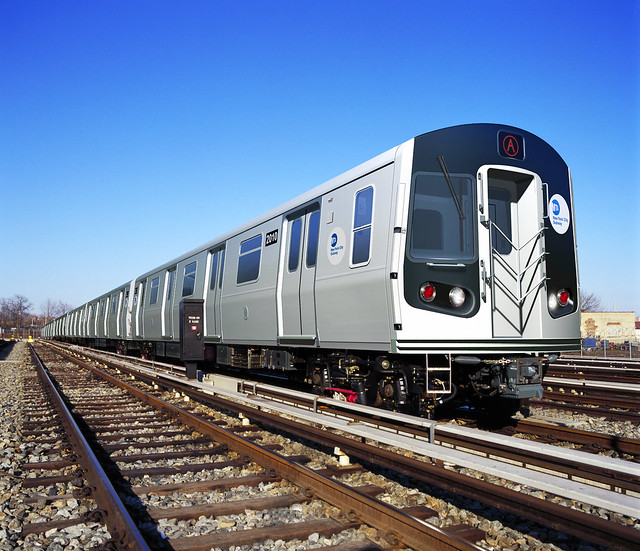
The first R179s will be delivered in late 2014. I miss the colored subway bullets on the front. (Rendering via Bomardier)
The MTA voted to approve the deal in late March, and today, the i’s have been dotted and the t’s crossed as Bombardier announced the signing of a $599 million deal to provide Transit with the R179 rolling stock order. The order, built entirely in Plattsburgh, NY, will consist of 300 new cars.
While we know the general contours of the R179 contract, Bombardier’s announcement gives us a timeline. The first 10 cars will arrive in New York City during the third quarter of 2014, and the remainder of the order will be delivered between mid-2015 and early 2017. These cars will replace the R32s and R42s currently in use along the C and J/Z lines respectively.
Raymond Bachant, President, Bombardier Transportation North America, said: “Bombardier’s partnership with NYCT began in 1982 with an order for 825 subway cars. Since then, we have delivered close to 1,900 vehicles to our valued customer. We are proud that NYCT has shown its confidence in our products and technologies once again, and we look forward to providing high quality, reliable, safe rail cars for the millions of people who ride New York’s subway system every day.”
We still don’t have many details about the inner workings of these newest rolling stock order. They will, of course, come replete with dynamic strip maps and the like, but by the time these arrive in New York City, that innovation will have been on the rails for the better part of a decade. We’ll see what other new features the R179s carry soon enough.









